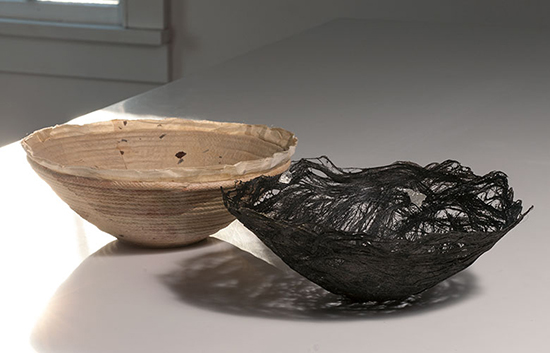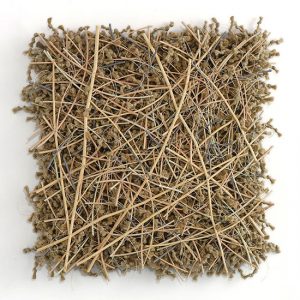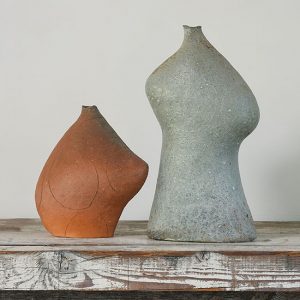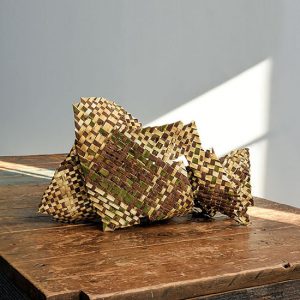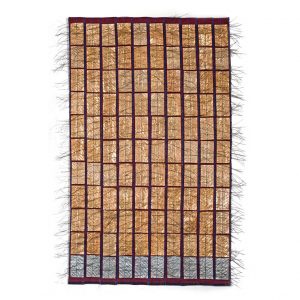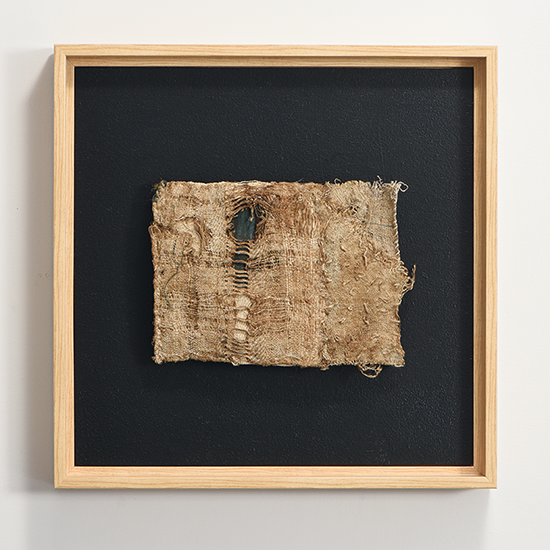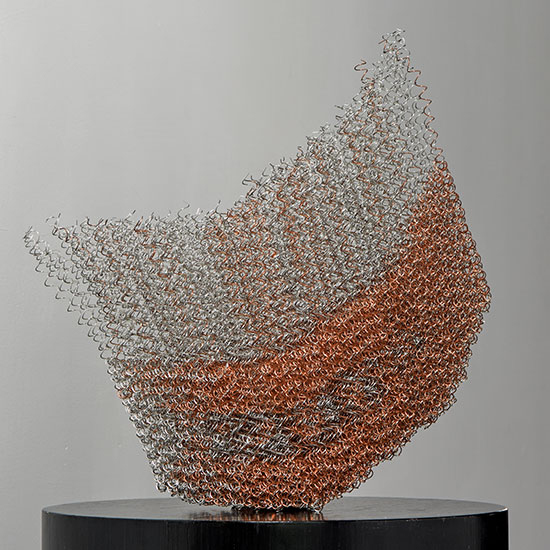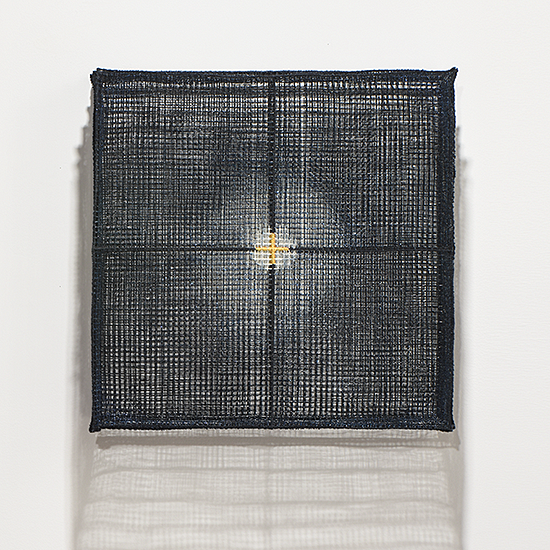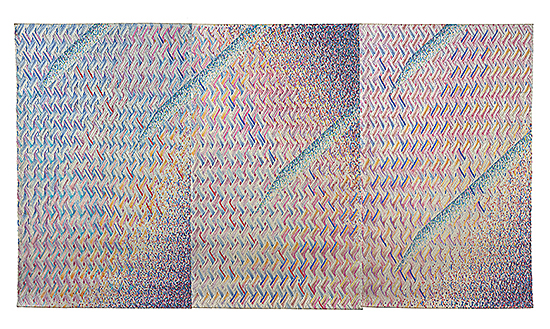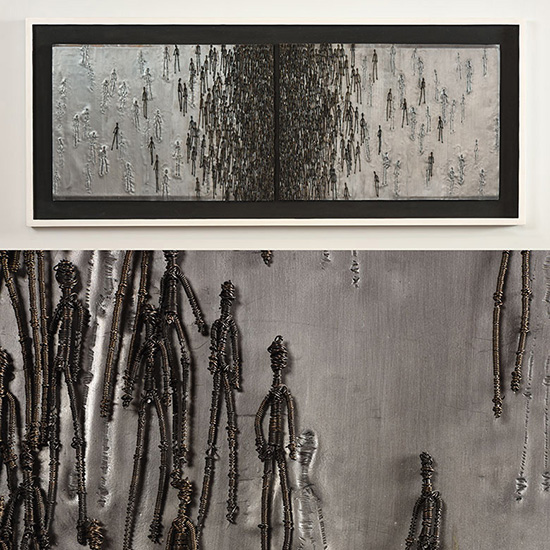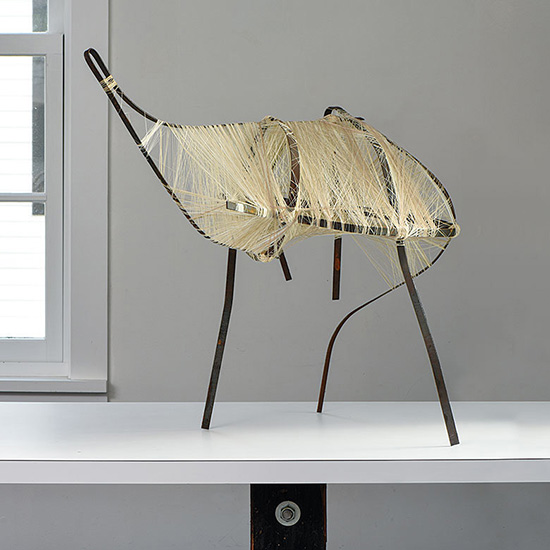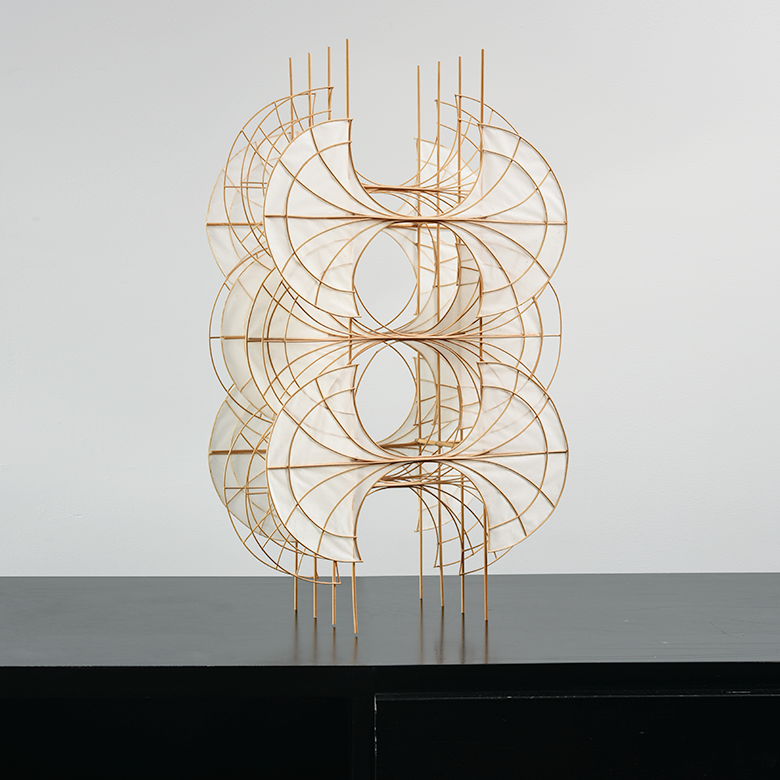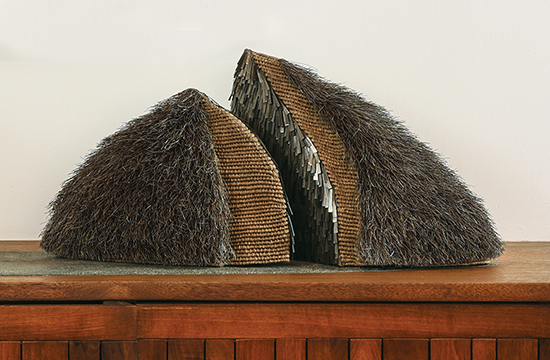Inspired by her lifelong love of human condition, Dawn MacNutt’s work remains centered on the “beauty of human frailty. Witnessing small, yet meaningful human interactions, such as seeing people experience pain, love and joy, has had a lasting impact on MacNutt’s work. To obtain material for her work, MacNutt utilizes the nature around her, using willow harvested from the ditches and lanes around her home in Nova Scotia.
Made solely from paper, Cube Connection 09 showcase Noriko Takamiya’s non-traditional basketry techniques. Despite choosing differing methods, Takamiya still feels connected to ancient basketmakers. “I find myself in the same situation,” explains Takamiya. “Even if the resulting objects are different, the ancient basketmakers and I do the same thing, which is to seek the techniques and materials to develop into one’s own work.”
In 1975, Kyoko Kumai began using metallic materials such as stainless steel filaments in her sculptures. The malleable nature of the stainless steel allows it to be woven, twisted or bundled to create sensuous forms in order to express aspects of wind, air and light. “Thin pieces of stainless steel wire create a richly expressive fabric that does not stand solidly, cleaving the air,” explains Kumai. “It has its own language fluttering above the floor; breathing and melting into the air.”
Ex Claim! by Gyöngy Laky is sure to grab your attention. Made using G.I. Joes and bullets, the piece serves as Laky’s personal examination of our complex relationships with the world around us. Laky’s works often have underlying themes of opposition to war and militarism. Born in Hungary in 1944, the physical and emotional effects of war impacted Laky from a very young age. In her opinion, “We are smart enough to have moved beyond war as a means of dealing with problems by now.”

Ex Claim!, Gyöngy Laky,
commercial wood”; 2014; G.I. Joes; acrylic paint; “bullets for building (trim screws),
64” x 21” x 7”. Photo by Tom Grotta.




